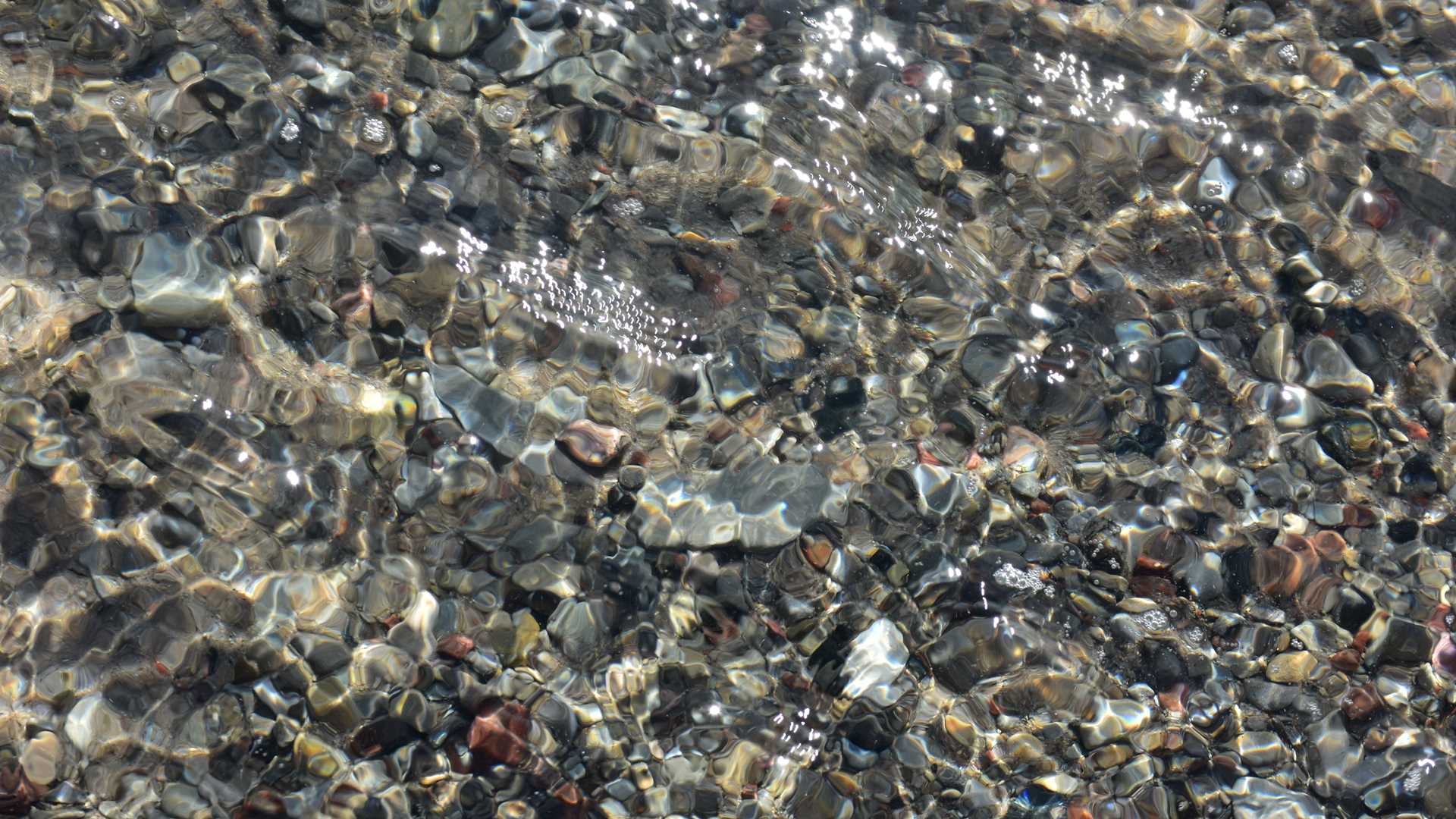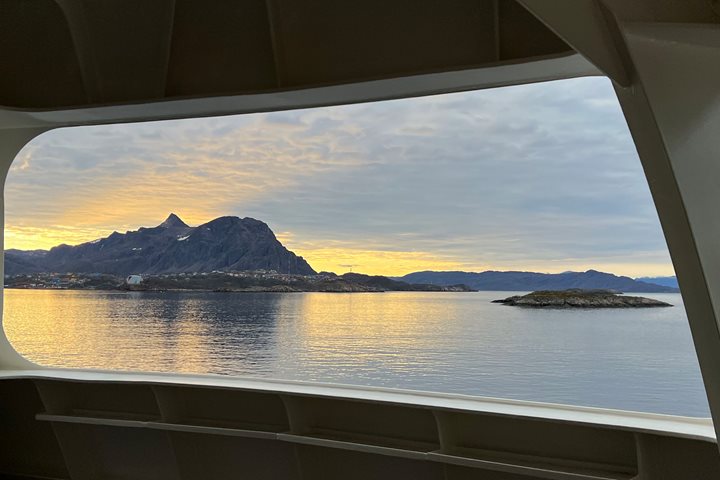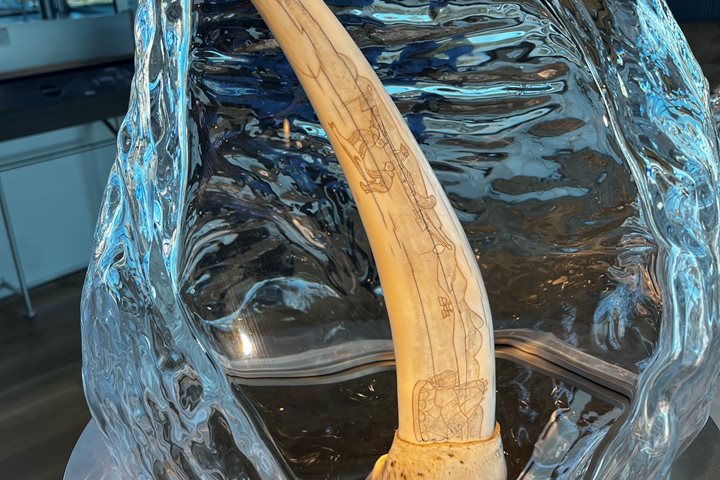National Geographic Resolution’s good weather favor continued as we sailed into Queen Maud Gulf. Clear skies and sunshine with a gentle breeze urged us onwards. Off to shore we went in our Zodiacs. We spotted a smattering of arctic loons soaring above us. The water was clear enough to see straight down to the rocky bottom several meters from shore, and the bottom was sprinkled with colorful pebbles. The cool temperatures of eight to nine degrees Celsius above the surface and two to three degrees Celsius below the surface dissuaded us from investigating to see if we could find any gold speckled rocks.
Once ashore, a quick trek across a sandy beach led us to a small ravine. Sprinkled throughout the ravine were small clusters of purple saxifrage. Inuit people have consumed the petals from this plant for generations. While bitter at first, they eventually become sweet. Later in the season, they are dried for use in tea. Surrounding the stream, the land was riven with cracks created by permafrost repeatedly melting and freezing. Due to this ever-evolving process, ponds have also formed ashore. Strong winds churned up waves along the shore of the ponds. Evidence of common eiders in the form of feathers and eggshells littered the shores.
As we made our way back to the beach, arctic willows, also known as rock willows, dotted our path. Unlike the willows most people are accustomed to at home, the arctic willow is lucky if it reaches a height of four inches. Strong winds and brutal cold in the region prevent almost all plants from growing very far off the ground. We were fortunate enough to spot a willow near its maximum height.
After our hikes ashore, we returned to National Geographic Resolution just in time for a very special Bavarian themed teatime! Hotel Director Laura and Chief Bartender Derek outdid themselves with fresh from the oven pretzels and a beer tasting that even included a Spitsbergen Weissbier from Svalbard! Just another beautiful day aboard National Geographic Resolution.







